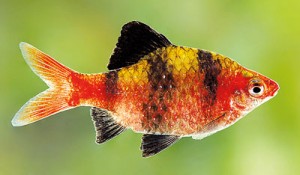Refreshing return of our freshwater fish
Rohan Pethiyagoda, Sri Lanka’s foremost expert on fish, published his influential work ‘Freshwater Fishes of Sri Lanka’ in 1990. Over two decades later, three wildlife enthusiasts are about to launch the first of its kind after Pethiyagoda’s work. Titled ‘Sri Lankan Freshwater Fishes’, theirs is a revised and updated account of the country’s rich diversity when it comes to freshwater fish.
Madura De Silva, Dr. Thilak Jayarathne and Nadika Hapuarachchi embarked on the project in 2007. Founder members of the Wildlife Conservation Society-Galle (formed when they were in school, “for the love of nature”), they were urged by friends, family and colleagues to embark on revisiting Pethiyagoda’s stamping ground to find and photograph 92 species of ‘true’, or primary, freshwater fish found in Sri Lanka.

Long days in the field: Madura de Silva (right)
“For an island our country has a remarkably diverse number of species when it comes to freshwater fish,” observes Madura De Silva when we meet him for an interview. His co-authors are otherwise engaged with work commitments-Dr. Thilak Jayarathne is a gynaecologist and Nadika Hapuarachchi is a software engineer. Madura himself is a sales and marketing professional. “We lead hectic lives, so you can imagine why this book is eight years in the making,” he smiles.
A team of 20, comprising the authors, specialists and volunteers travelled to almost every aquatic habitat-bar some in the north-to obtain first-hand information and stunning, high definition images of the fish. It’s not easy business, we’re told. Carrying heavy equipment, the team trekked miles through forest growth, waded waist deep in mangroves, scuba-dived, snorkelled and generally spent their time on all fours to capture the lives of these freshwater fish. They were attacked by buffaloes and braved the risk of rat fever and crocodiles. Most weekends and holidays were spent in far corners of the country, taking photographs, speaking to locals and making notes; they “sacrificed a lot,” says Madura. “But it was worth it.”
Rohan Pethiyagoda’s publication has nurtured the curiosity of many over the last 25 years. It is a comprehensive piece of work, but over that time, nomenclature has changed, new species of fish have been introduced and some, like the spiny eel are even believed to be extinct in Sri Lanka (this team managed to rediscover and capture an extremely rare picture of the spiny eel, however, one of a number of such rare photographs in the book). The book also contains images of fishes such as Minkin’s Golden Rasbora and the Malpulutta (Ornate Paradisefish), a tiny species of gourami that inhabits shallow pools of water in forested areas. “Taking a picture of the Malpulutta took a long time!” reveals Madura. “Sometimes it would take us 10-15 visits to sight and take pictures of a fish.”

Black Ruby Barb
The south-western wet zone is easily the most densely populated for freshwater fish, Madura reveals, but their habitat is fast facing the threats of development and pollution. Organisations like the National Aquatic Research Agency (NARA) and the International Union for Conservation of Nature (IUCN) along with government institutions play a significant role in conservation efforts, he notes, but perhaps more timely and urgent action is needed to protect these freshwater fish, especially from the risks of irrigation and hydropower projects. Measures such as ‘fish ladders’ could be used to enable passage to migrating fish over or around an obstacle on a river, he cites as an example.
The photograph-driven book lists 92 species of freshwater fish in Sri Lanka, of which 50 are endemic. In addition, 23 estuarine fish and 27 exotic fish are also present in all their bright hued glory. To photograph these fish the team would travel with a large tank-like contraption and huge bottles of mineral water. The results are vibrant; the fishes have been captured in intensely clear detail. A description is available for each fish, along with details of distribution, threats faced by that species and a taxonomic key for field identification. A distribution map is also available for those who’d like to go and see the fish for themselves. The book also traces ichthyology (the study of fish) in Sri Lanka from the 1800’s up to the present.
The research and publication process was funded by Nations Trust Bank.
A photographic exhibition on freshwater fishes of Sri Lanka will be at the Lionel Wendt from January 30 to February 1- the book priced at Rs. 5500 will be on sale at the exhibition or can be ordered online- http://www.sundaytimes.lk/150125/


